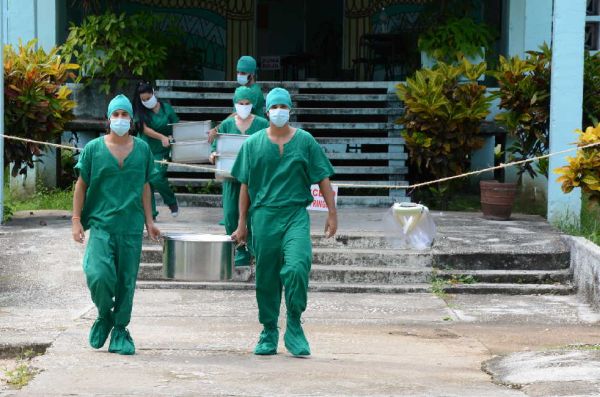
(Photo: Yoan Pérez).
Those who walk the streets of Sancti Spiritus these days will hardly notice the peculiarities of its colonial architecture —a sort of luxury, as Dr. Alicia García Santana would say, who has distinguished the city as «the most medieval» of the first Cuban villages.
For a few weeks now, no element of the urban landscape of this central Cuban territory has attracted so much attention as those yellow ribbons, as necessary as they are bizarre, that have been dividing the town in an attempt to mark the areas where the COVID-19 epidemic has settled in.
«They are like a leap year curse», said yesterday Juan Manuel González, a resident of Colón district, surprised by the way in which the yellow divisions spread throughout the city, where the areas held in quarantine or with movement restriction have been growing exponentially and could even continue to increase due to the occurrence of possible of new cases.

In the context of the “new normality” stage being implemented in most Cuban territories, Sancti Spíritus struggles to control the new outbreak that, since last October 5th, made the province go back to the limited autochthonous transmission phase, with the infection present in seven of the eight municipalities; the highest incidence rate per 100,000 inhabitants in the country and a very tense situation in the capital city.
According to the Ministry of Public Health (Minsap), the epidemiological situation of the territory, with the most intense levels of COVID-19 transmission in the country so far in October, has made it necessary to reinforce surveillance and carry out population studies in those places with high concentration of people diagnosed with the disease.
Dr. Manuel Rivero Abella, health director in the province, told the media that the population studies have been concentrated in the North, South, Center and Los Olivos areas of the capital city. They have been also carried out in Trinidad and in Topes de Collantes, where two coronavirus-infected patients from the nearby province of Villa Clara informed sanitary authorities about their visit to that community.

The search for possible infections obviously includes hundreds of people who, having had contact with confirmed cases, remain in the 28 isolation centers created in the province, as well as all the suspects who have been transferred to the four facilities prepared for this purpose.
The supreme objective of the province today is to break, as soon as possible, the transmission of the disease throughout the jurisdiction, an intention that follows the protocols arising from national and international experience, in which both the disciplined participation and self-responsibility of the population are key factors.
 Escambray ENGLISH EDITION
Escambray ENGLISH EDITION





Escambray reserves the right to publish comments.